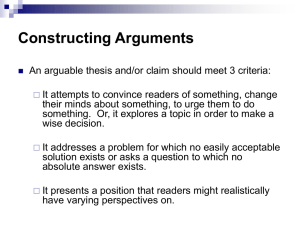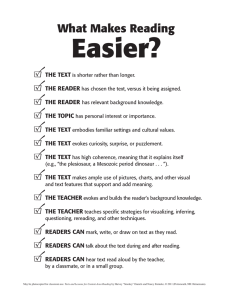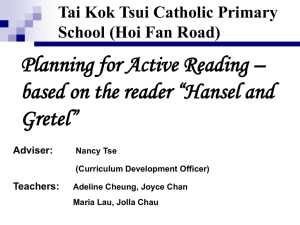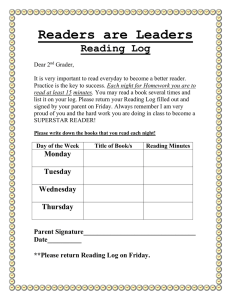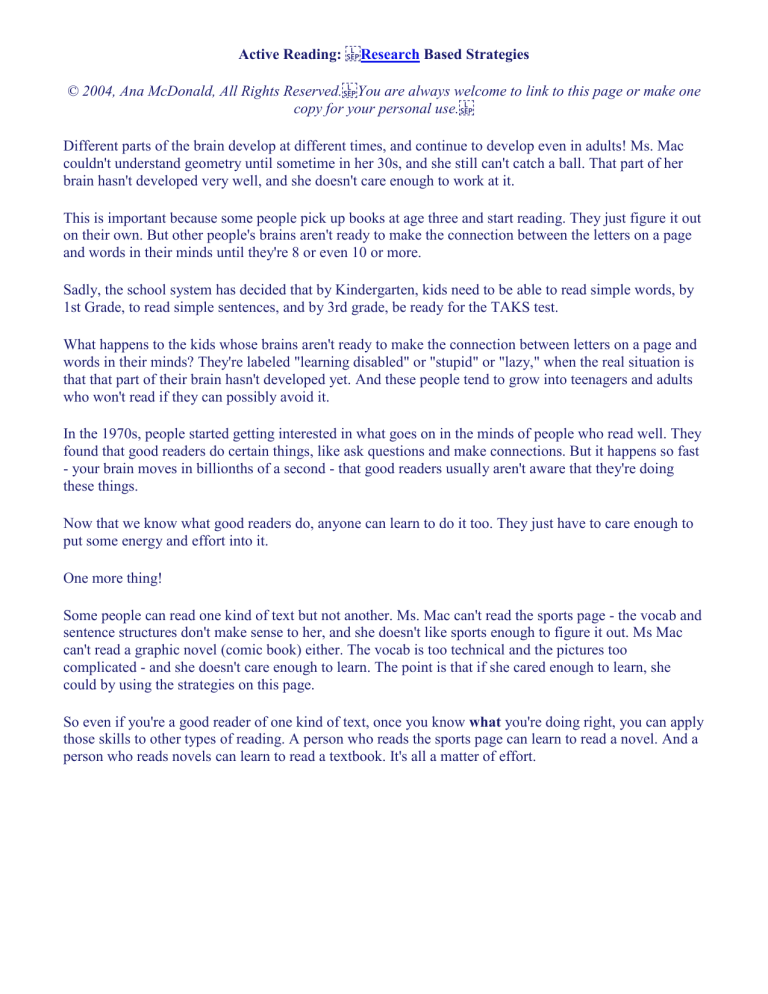
Active Reading: Research Based Strategies
© 2004, Ana McDonald, All Rights Reserved. You are always welcome to link to this page or make one copy for your personal use.
Different parts of the brain develop at different times, and continue to develop even in adults! Ms. Mac couldn't understand geometry until sometime in her 30s, and she still can't catch a ball. That part of her brain hasn't developed very well, and she doesn't care enough to work at it.
This is important because some people pick up books at age three and start reading. They just figure it out on their own. But other people's brains aren't ready to make the connection between the letters on a page and words in their minds until they're 8 or even 10 or more.
Sadly, the school system has decided that by Kindergarten, kids need to be able to read simple words, by
1st Grade, to read simple sentences, and by 3rd grade, be ready for the TAKS test.
What happens to the kids whose brains aren't ready to make the connection between letters on a page and words in their minds? They're labeled "learning disabled" or "stupid" or "lazy," when the real situation is that that part of their brain hasn't developed yet. And these people tend to grow into teenagers and adults who won't read if they can possibly avoid it.
In the 1970s, people started getting interested in what goes on in the minds of people who read well. They found that good readers do certain things, like ask questions and make connections. But it happens so fast
- your brain moves in billionths of a second - that good readers usually aren't aware that they're doing these things.
Now that we know what good readers do, anyone can learn to do it too. They just have to care enough to put some energy and effort into it.
One more thing!
Some people can read one kind of text but not another. Ms. Mac can't read the sports page - the vocab and sentence structures don't make sense to her, and she doesn't like sports enough to figure it out. Ms Mac can't read a graphic novel (comic book) either. The vocab is too technical and the pictures too complicated - and she doesn't care enough to learn. The point is that if she cared enough to learn, she could by using the strategies on this page.
So even if you're a good reader of one kind of text, once you know what you're doing right, you can apply those skills to other types of reading. A person who reads the sports page can learn to read a novel. And a person who reads novels can learn to read a textbook. It's all a matter of effort.
Remember: Reading is Understanding. If you don't understand it, you haven't read it!
Questions - A good reader knows when they don't understand, asks questions about what they don't understand, and looks for the answers. Sometimes the answers are in the text, sometimes they're already in your head. Most of the time, they're in both places. And every once in a while, the answers are in another text.
To start reading actively, pay attention to yourself!
Focus on your own mind.
Become aware of when you don't understand something.
Put a ? in the margin or by the word you don't understand. This is the beginning of understanding
The next step is figuring out what you don't understand. When you can put it into a question , you're half-way to understanding.
o Which character is which?
Who's talking? o What does that mean? o Are there words you don't know? Look them up in the dictionary.
o Is the way the sentence put together confusing? Sometimes it helps to read it aloud.
When you zone out, write Z in the margin of your story. Why did you zone there?
o Sometimes it's because you didn't understand.
o Sometimes it's because something made you go off into a daydream.
Figure out which words or images made you remember something else. These are
"connections," see below.
Notice your emotions .
o When you think something is funny, write LOL (Laughing Out Loud) in the margin.
o If it's sad, put a sad-face in the margin.
You may have to re-read, looking for the answer . You may have to keep reading to find the answer.
Fix-It Strategies - How to Find the Answers
(1) re-reading - Mark your text w/ RR
(2) stopping to think - Mark your text w/ S&T
(3) using a reference book - Mark your text w/ RB
(4) raising your hand to ask the teacher to explain - Mark your text w/ ASK
Question-Starters
I wonder what it means when...
I don't understand...
But I thought that...
It doesn't make sense that...
How could someone do that...
Connections - Good readers are constantly making connections, whether they know it or not.
Connections are ideas, thoughts, and memories you have as you read.
Often those connections are made when you zone. When you realize you have made a connection, write down a few words in the margin of the book to help you remember the idea, then go back to reading.
You can make connections to
yourself people you know things in the news and things that happen in society something else in the text you're reading now another text
Connection Starters
I can imagine what it's like to...
Wow, I wish I could...
I remember something like this happened to me when...
But earlier in the book it said...
This reminds me of...
I read another book where the character...
The character must be feeling...
This is what happens when...
Conclude - A conclusion (noun) is an idea that you come up with based on the evidence in the text.
Conclusion Starters
I never thought about... before!
I think the writer wants the reader to...
It would be a different world if...
I know what this means! It means that...
If only my friend (parent, love, teacher) knew about... then... would be different....
The author doesn't say so, but I'll bet that...
Evaluate
Love it! - Good readers know what they like.
Love it! Starters
I'm so glad that...
My favorite part was when...
It was really interesting when...
I really liked how the author...
It sent chills down my spine when...
Hate it! - Good readers also know what they don't like.
Hate it! Starters
What I don't like is...
Excuse me! That's just plain wrong!
I'm sorry, but the character (author) is an idiot because...
References
Barry, Arlene L. "Reading Strategies Teachers Say They Use." Journal of Adolescent & Adult Literacy.
46:2, 132 - 141.
Beers, Kylene. Holt Literature & Language Arts Introductory Course (California Edition).
Billmeyer, Rachel & Mary Lee Barton. Teaching Reading in the Content Areas: If Not Me, Then Who?
2nd ed. Aurora, CA: McREL, 1998.
Duke, Nell K. Building Comprehension through Explicit Teaching of Comprehension Strategies:
Presentation to the Second Annual MRA/CIERA Conference, September 22, 2001.
< www.ciera.org/library/presos/ 2001/2001MRACIERA/nduke/01cmndk.pdf
>
Implementing the Reading TEKS in Ninth Grade Instruction (Revised). Austin: University of Texas
System/Texas Education Agency: 2003.
Meeting the Needs of Struggling Readers: A Resource for Secondary English Language Arts Teachers.
Austin: University of Texas System/Texas Education Agency.
< http://www.texasreading.org/utcrla/materials/secondary_ela_resource.asp
>
Meltzer, Julie, Nancy Cook Smith, & Holly Clark. Adolescent Literacy Resources: Linking the REsearch and Practice. Providence: LAB at Brown University & South Hampton, New Hampshire: Center for
Resource Management. < www.alliance.brown.edu/pubs/adlit/alr_lrp.pdf
>
Ruddell, Martha Rapp. Teaching Content Reading and Writing.
3rd ed. New York: John Wiley & Sons,
2001.
Schoenbach, Ruth, Cynthia Greenleaf, Christine Cziko, & Lori Hurwitz. Reading for Understanding: A
Guide to Improving Reading in Middle and High School Classrooms.
San Francisco: Jossey-Bass, 1999.
Struggling Reader's Workshop & Materials, Region XIII, Summer 2003.
Sturtevant, Elizabeth G. The Literacy Coach: A Key to Improving Teaching and Learning in Secondary
Schools. Alliance for Excellent Education.
White, Suzanne. Materials developed by a Reading Specialist. Unpublished.
Wilhelm, Jeffrey D., Tanya N. Baker, & Julie Dube. Strategic Reading: Guiding Students to Lifelong
Literacy, 6-12.
Portsmouth, NH: Boynton/Cook (Heinemann), 2001.

